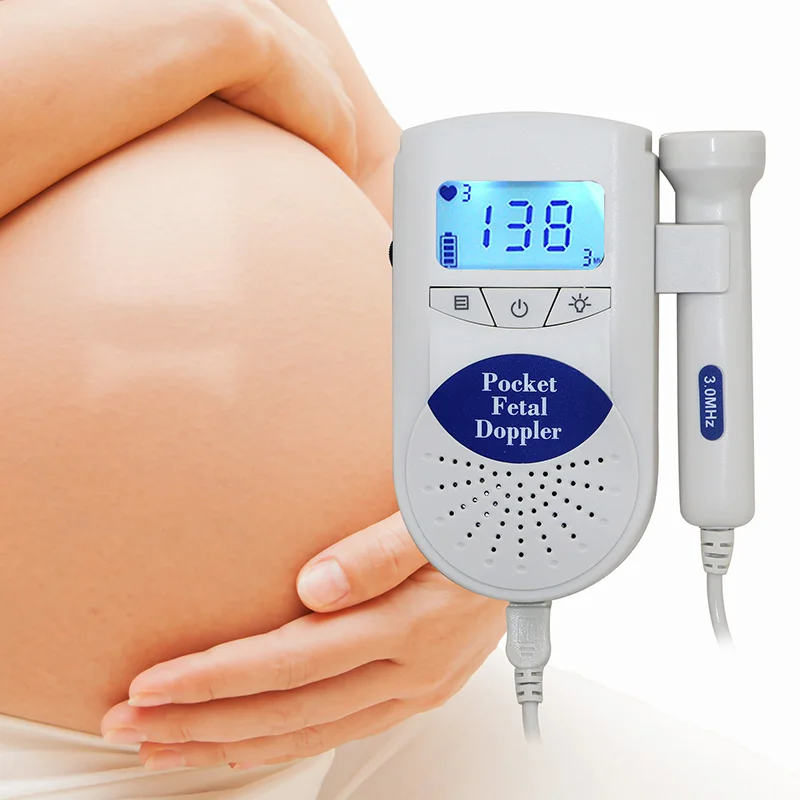
Fetal Doppler
A Fetal Doppler in Nagpur is a small handheld device using high-frequency ultrasonic waves that can detect the heartbeat of a fetus from as early as 12-14 weeks of gestation. These are painless and harmless because it is devoid of the following reasons:
1. Confirms Fetal Viability
2. Identify fetal cardiac activity
3. OBSERVE FETAL WELLBEING
4. Reassure the parents concerning the fetus health
Types of Fetal Dopplers:
1. Handheld Dopplers: Small, portable, battery operated for some inhome use
2. Clinical Dopplers: Higher frequency devices for clinical use
How Fetal Dopplers function:
1. Ultrasound gel applied over the mother’s abdomen
2. Place Doppler probe over abdomen; typically over the lower pelvis
3. The device sends out high-frequency sound waves that rebound back from the fetus’ heart
4. Sound waves are translated to audible noises and you hear the heartbeat
.
Fetal Dopplers should not be used for self-diagnosis or as a substitute for prenatal care from a doctor. See a doctor and get proper care based on your findings.
What Is a Fetal Doppler?
A fetal doppler is a medical device working through ultrasound technology to sense and listen to the heartbeat, movement, or flow of blood in the fetus. This device will enable the monitoring of the well-being of a fetus without causing an invasion, or even the sensation of some sort of pain, and it does this safely. This technique is typically utilized when the fetus reaches about 12-14 weeks of gestation.
A typical fetal Doppler includes:
1. Transducer or handheld probe
2. Display screen or audio output
3. Ultrasound gel in maintaining clear signal transmission
Applications of Fetal Dopplers:
1. To monitor fetal condition in antenatal care
2. Healthcare providers would need to dispense it within clinics and hospitals
3. Expecting parents would also be required to use it at home with a prescription or under the supervision of the doctor
Fetal Dopplers can detect the following:
1. Fetal heartbeat
2. Fetal movement (kick counts)
3. Umbilical cord blood flow
4. Fetal breathing movements
Key Features of a Fetal Doppler:
- Purpose:
- Primarily used to reassure expectant parents by allowing them to hear the baby’s heartbeat.
- Can help healthcare providers detect potential issues with the baby’s heart rate, such as an abnormally fast (tachycardia) or slow (bradycardia) heart rate.
- When It’s Used:
- Typically, a fetal Doppler can start detecting the fetal heartbeat as early as the 8th to 12th week of pregnancy, though it might be easier to hear as the pregnancy progresses.
- It is used during routine prenatal visits to monitor the baby’s heart rate.
- It can also be used if a mother reports decreased fetal movement or if the doctor wants to check the baby’s well-being.
- How It Works:
- A water-based gel is applied to the mother’s abdomen to help the device’s probe move smoothly and enhance sound wave transmission.
- The Doppler probe is then placed on the abdomen, and the device emits sound waves that bounce off the baby’s heart and return to the device, producing sound or a reading of the heart rate.
- Types of Fetal Dopplers:
- Clinical Fetal Dopplers: Used in doctors’ offices by healthcare professionals. These provide the most accurate and reliable readings.
- Home-Use Fetal Dopplers: Available for personal use by expectant parents. However, it’s recommended to use them under the guidance of healthcare providers due to the possibility of incorrect readings or causing unnecessary anxiety.
- Benefits:
- Offers reassurance for parents between medical checkups.
- Can give an early indication of fetal distress or other concerns.
- Risks and Considerations:
- While fetal Dopplers are generally considered safe, they should be used in moderation as overuse can lead to unnecessary anxiety.
- It’s important to remember that hearing a heartbeat doesn’t always guarantee that the baby is completely healthy, so regular prenatal visits and medical checkups remain essential.
- When to Seek Professional Advice:
- If the fetal Doppler shows an abnormal heart rate, it is crucial to contact a healthcare provider for further evaluation.
What is procedures of Fetal Doppler?
There are these steps in using the Fetal Doppler:
1. Preparation
– Ultrasound gel is applied to the abdomen
2. Probe Placement
– There is a handheld probe, or the transducer, that is placed on the abdomen
– Normally in the lower pelvis region; adjustment may be made to optimize signal
3. Device Setup
– Turn on and set the correct frequency in the Fetal Doppler
– Adjust to a right volume or a sensitivity settings
4. Signal Detection
– The probe detects the fetal heartbeat and activity
5. Audio Output
– The sounds of the fetal heartbeat and movement can be heard by a speaker
– Many monitors have a waveform or other visual data
6. Recording and Storage
– Some monitor models can record and store fetal heartbeat sound
– For future playback or for use by healthcare providers
7. Post-Procedure
– The probe is removed, or a ultrasound gel is cleaned up
-Refer to a healthcare professional if tests have come out abnormal.
At our Neurosys Multispeciality Center, we perform several key procedures including Craniotomy, which is primarily for the excision of brain tumors; V-P Shunt Surgery for treating hydrocephalus; surgeries for epilepsy; and operations targeting brain stem glioma. Beyond these, we offer a range of other neurosurgical services. If you have any questions that are not answere, please contact us through our Contact Us or Book your Appointment.
